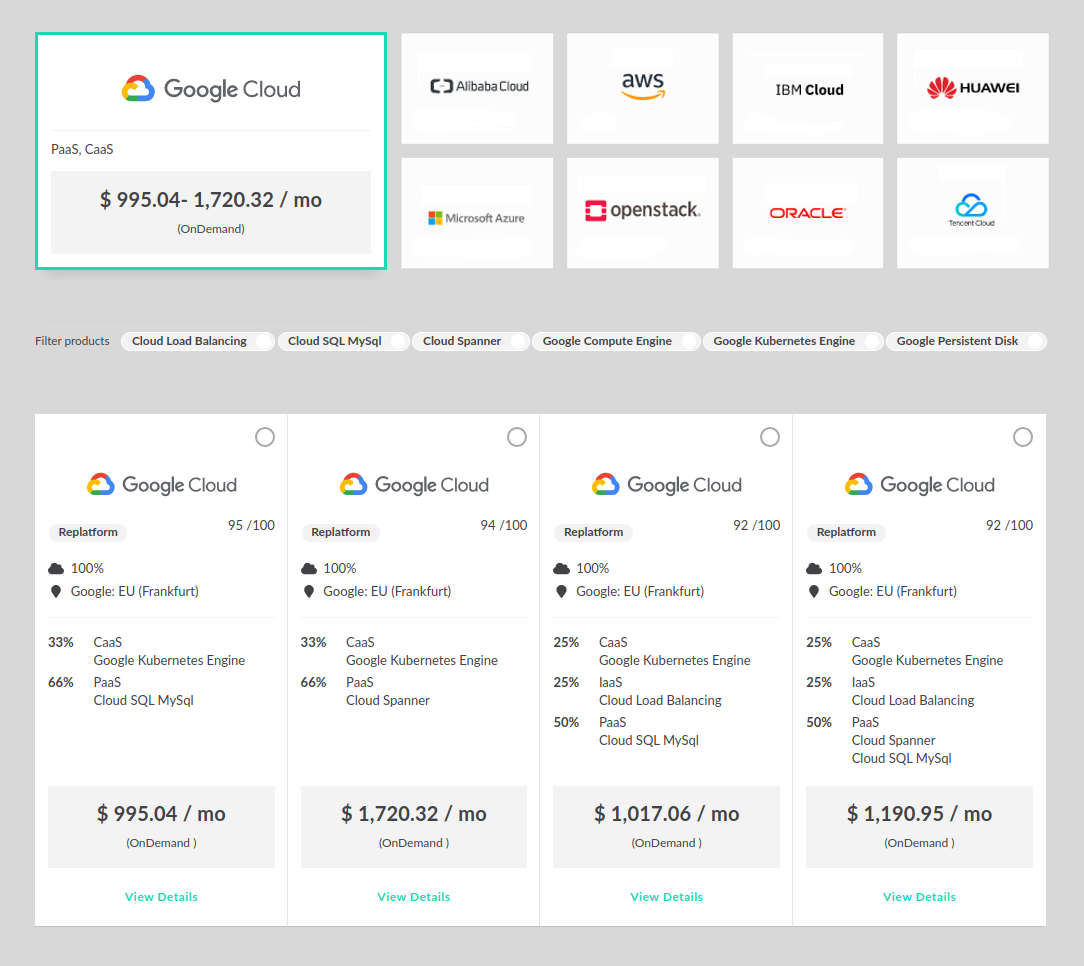From cloud... to cloud! Moving to a new cloud provider

A few years back, moving to the cloud or staying on-premises was still a decision most large organizations were grappling with. But these days, as more and more organizations have already moved to the cloud, the trend is shifting.
According to a Eurostat survey conducted on about 150,000 enterprises in Europe, 41% of companies were using cloud services in 2021. And if we focus on the large enterprises (defined in the survey as more than 250 employees), the cloud services adoption jumps to 72%.
For most IT practitioners, it is no longer just about being in the cloud or not, but rather: “how can we upgrade our existing cloud infrastructure?”. As a consequence, new concerns are emerging: did we do it correctly from the start? Are we leveraging the benefits associated with the cloud? What cloud solutions are now “state-of-the-art” in our industry?
The best approaches to modernize the cloud infrastructure are now at the heart of discussions. And sometimes, modernization involves switching a group of applications from one cloud vendor to another. One might think that moving to a new provider is easier than moving from on-premises to the cloud. In practice, however, cloud-to-cloud migrations are also transformation projects, and the related challenges are quite similar to any other IT modernization initiative.
In this article, we’ll discuss the challenges associated with cloud-to-cloud migrations, and discuss how you can make the process easier and faster with the Txture platform.
What makes cloud-to-cloud-migrations challenging?
Collecting data about your existing cloud estate can be time-consuming

As for every transformation initiative, it’s better to start with a good understanding of your current situation. In the case of cloud-to-cloud migrations, the main prerequisite is to collect information about your current portfolio of cloud services. This goes from the compute and storage infrastructure layers, to platform services like managed databases or container environments.
While an accurate picture of the current cloud infrastructure is necessary for a successful migration, many organizations struggle with that initial step, as part of the information needed is often missing or incomplete.
You can’t always find an exact replacement from one provider to another
Although the capabilities offered by the main cloud providers are pretty similar, the environments obviously differ, and the customizations you’ve set up in your current cloud estate will probably not be portable “as is” in your future cloud architecture.
Therefore, one challenge is to find like-for-like replacements of your assets in the catalog of the new cloud vendor. This would be easy if the catalogs were harmonized across providers, but - you’ve guessed correctly: they’re not! Each vendor has its own way to display its cloud service portfolio. Comparing services and check for feature parity can therefore become a time consuming process.
The variety of pricing models makes cost forecasting difficult
On-demand pricing, volume discounts, spot pricing, discounts for reserved instances… One advantage of cloud computing is that providers usually offer a variety of pricing options, leading to more flexibility, and hopefully to cost savings.
However, this also means that forecasting the overall costs of your future cloud architecture is not so easy. You will need to define your architectural requirements, and identify the pricing model that works best for your situation. Obviously, you’ll probably opt for different pricing options from one cloud service to another. Again, cloud vendors generally have their own way to showcase their pricing options. The comparison of cloud provider’s prices can then become quite labour intensive, if you lack an overarching comparison system.
Plan your cloud-to-cloud migration with Txture
Whether it’s the cost forecasts, the mapping of your current cloud estate, or the difficulty to build like-for-like migration scenarios, the challenge is quite the same. When you start a cloud-to-cloud migration, you leave your existing situation for a future cloud infrastructure that is unknown. Being able to plan your migration step by step, and to accurately forecast what the future architecture will look like, is the key to success.
The Txture software platform can assist you in planning your cloud-to-cloud migration with speed and confidence. The platform empowers you to quickly analyze your current cloud infrastructure, and calculate like-for-like and modernization scenarios for moving to a new cloud provider.
 If you plan to move to Google Cloud, the Txture platform generates several migration scenarios. You can compare them and quickly define the best option.
If you plan to move to Google Cloud, the Txture platform generates several migration scenarios. You can compare them and quickly define the best option.
Txture integrates with your current cloud provider’s API and ingests the current service portfolio with a single click. Then, it finds appropriate cloud service replacements and presents a bill of materials for different migration scenarios.
Want to learn more?
For more information, watch our 3 minute introductory video to the Txture platform, or have a look at the product factsheet.
Do you have other questions? Reach out to us, we’ll be happy to discuss your current migration projects!
Related posts
29.4.2025Application ModernizationDefine your scope for IT modernization2.3.2025
Cloud StrategySelecting the right cloud data center for hosting your workloads27.6.2024
Cloud optimizationA great driver to maximize cloud value: moving to instances with modern processors 24.5.2024
Cloud Knowledge5 best practices to manage change during a cloud transformation5.4.2024
Generative AIHow to welcome Generative AI into your existing tech ecosystem
